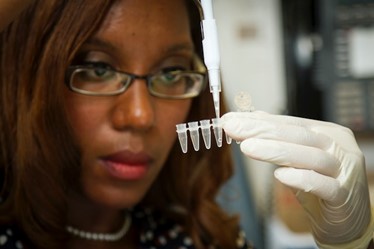Biotechnology combines natural science, organisms, and cells with molecular analogs for services and products. Utilizing such processes has been shown to improve patient’s quality of life and provides a broader application range in human welfare research and improvement.
John Kim UCLA says that the biotechnology used in medicine and healthcare settings is vital to ensure the manufacturing of safe, effective drugs while reducing immunological reactions prevalent in medications derived from non-human substances. But there are five particular applications that have revolutionized the healthcare industry to date.
Genetically Engineered Insulin
Patients with diabetes require insulin to remove excess blood sugar.
Historically, the condition was treated with insulin from pigs and calves. However, this caused allergies and other less-than-pleasant symptoms. Therefore, researchers worked hard to isolate human insulin.
The hormone is made up of two polypeptide chains (A and B) connected by disulfide bridges. In humans and other mammals, insulin is a prohormone containing an extra peptide that requires removal before mature insulin can be produced.
Scientists found it difficult to produce human insulin in its mature state until 1983, when a business called Eli Lilly solved the problem by:
- creating two DNA sequences that corresponded to the A and B chains.
- using the sequences to make insulin chains in E.Coli plasmids.
- making the chains individually, extricating the C-peptide, and joining them with disulfide bonds.
Gene Therapy
Gene therapy holds promise for treating hereditary illnesses.
John Myungjune Kim explains that the process involves inserting the correct gene for the dysfunctional or defective gene into a patient using vectors. The normal gene takes the functions of the irregular gene, resulting in a permanent cure if the procedure is conducted during early infancy.
Recombinant Vaccine
Recombinant vaccines are made using recombinant DNA technology. It involves inserting the DNA that encodes an antigen into mammalian or bacterial cells. From there, it’s purified, and an effective vaccine is created.
Currently, there are three types of recombinant vaccines:
- Subunit — Components of pathogenic organisms like proteins and peptides to protect against BCG, HSV, and Hepatitis B.
- Attenuated recombinant — Genetically modified pathogenic organisms to create non-pathogenic vaccines to protect against mumps, yellow fever, measles, and rubella.
- Vector recombinant — Genetically modified viral vectors to protect against specific pathogens like ZIKA or flu.

Molecular Diagnosis
Conventional testing measures like urine and serum samples don’t grant early detection. The condition is only recognized once the pathogen concentration has increased. But for successful cures, early detection is critical.
The most common biotechnology molecular diagnosis methods are Polymerase Chain Reaction (PCR), Enzyme-Linked Immunosorbent Assay (ELISA), and Fluorescence in Situ Hybridization (FISH).
Biomedical Innovations
The past few years have seen biomedical innovations go through the roof, including:
- Gene editing
- Biomaterials
- Regenerative medicine
- Bioprinting
- Nanomedicine
- Stem cell therapies
All of these have become potential remedies for a whole host of diseases. One of the most prominent is bioprinting complete, complex tissues for those suffering from kidney or liver damage.
The field of Biotechnology is catapulting the healthcare industry into the future.

